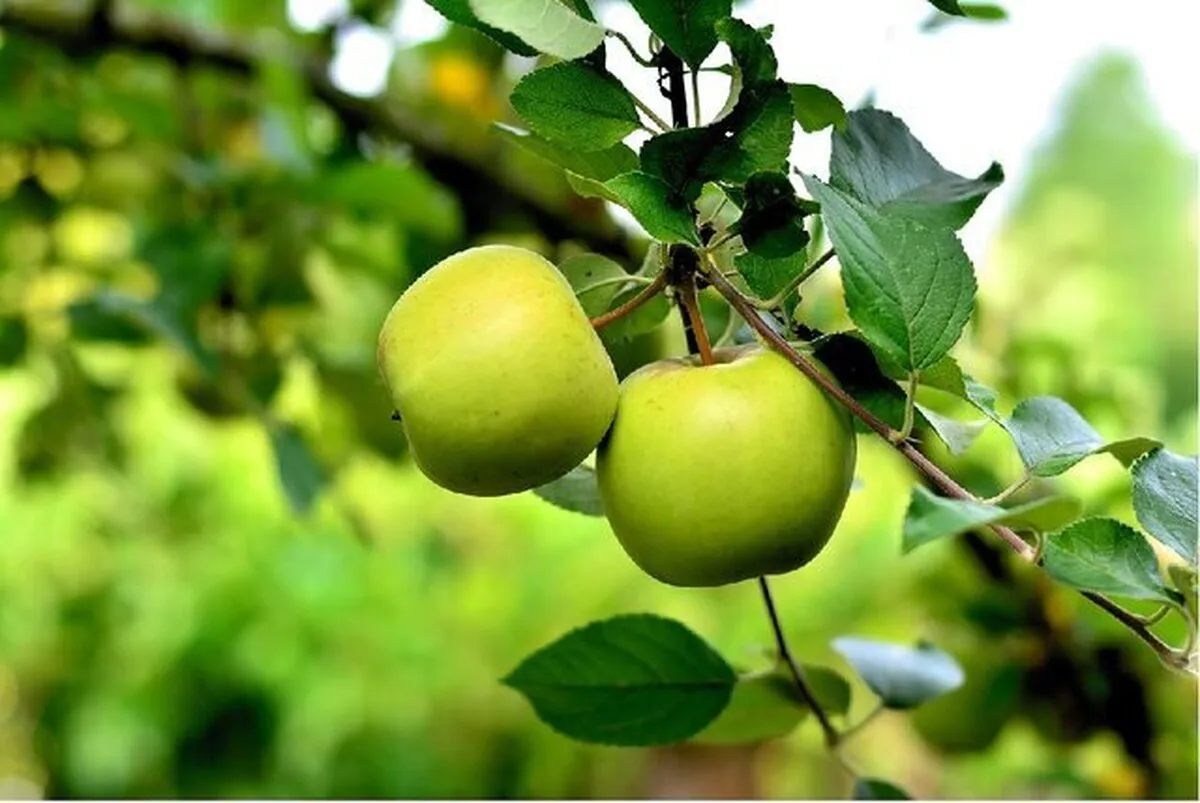Iran One of First Places of Wild Apples, Goats Domestication

Prior to this, studies had suggested the first apples were domesticated in central Asia. The studies argued that wild apple trees were first domesticated from the crabapple Malus sieversii Roem somewhere in the Tien Shan mountains of Central Asia (most likely Kazakhstan) between 4,000–10,000 years ago. M. sieversii grows at intermediate elevations between 900–1,600 meters above sea level (3,000–5,200 feet) and is variable in growth habit, height, fruit quality, and fruit size.
But later findings of a study carried out by researchers at Tehran-based Tarbiat Modares University showed that Caucasian apples that were grown in Lorestan and Kordestan provinces in the Western part of Iran in the Zagros mountains. The Iranian study showed that the apples cultivated in the Western part of Iran have a different genetic structure from the world's cultivated apples, and these researchers came to the conclusion that domestication of apples in Iran were different compared to that of Europe, and it was proved for the first time that Iran was one of the first places of apple domestication in the world.
In a research which was published in the journal “Molecular Ecology (/doi/10.1111/mec.16667), the Modares university’s researchers said that divergence processes in crop-wild fruit tree complexes in pivotal regions for plant domestication such as the Caucasus and Iran remain understudied.
They also said that investigated anthropogenic and natural divergence processes in apples in these regions using 26 microsatellite markers amplified in 550 wild and cultivated samples. We found two genetically distinct cultivated populations in Iran that are differentiated from Malus domestica, the standard cultivated apple worldwide. Coalescent-based inferences showed that these two cultivated populations originated from specific domestication events of Malus orientalis in Iran.
“We found evidence of substantial wild-crop and crop-crop gene flow in the Caucasus and Iran, as has been described in apple in Europe. In addition, we identified seven genetically differentiated populations of wild apple (M. orientalis), not introgressed by the cultivated apple,” the paper read.
According to the Iranian researcher’s study, Niche modelling combined with genetic diversity estimates indicated that these wild populations likely resulted from range changes during past glaciations. The study identifies Iran as a key region in the domestication of apple and M. orientalis as an additional contributor to the cultivated apple gene pool. Domestication of the apple tree therefore involved multiple origins of domestication in different geographic locations and substantial crop-wild hybridization, as found in other fruit trees.
The study also highlighted the impact of climate change on the natural species of a wild fruit tree and lays the ground for apple conservation and breeding programes in the Caucasus and Iran.
Moreover, Kevin Daly at Trinity College Dublin in Ireland has found that goats were domesticated in Zagros mountains in Western Iran.
Goats were domesticated as early as 10,000 years ago in the area around the Zagros mountains in what is now western Iran. The finding suggests goats were one of the first animals to be domesticated, with only dogs unambiguously preceding them.
“By 10,000 years ago, we have this lining up of archaeological and genetic data that seems to suggest that we have the first population of managed goats,” said Kevin Daly at Trinity College Dublin in Ireland, according to a research appeared on “zephr.newscientist.com” website.
Daly and his colleagues examined goat fossils preserved from two sites in the Zagros mountains: Ganj Dareh and Tepe Abdul Hosein, which have been excavated on and off for decades. They were inhabited between about 8200 and 7600 BC.
The researchers obtained DNA from preserved goat parts from both sites: 14 nuclear genomes, as well as 32 mitochondrial genomes that were only inherited from the animals’ mothers.
4155/i





















